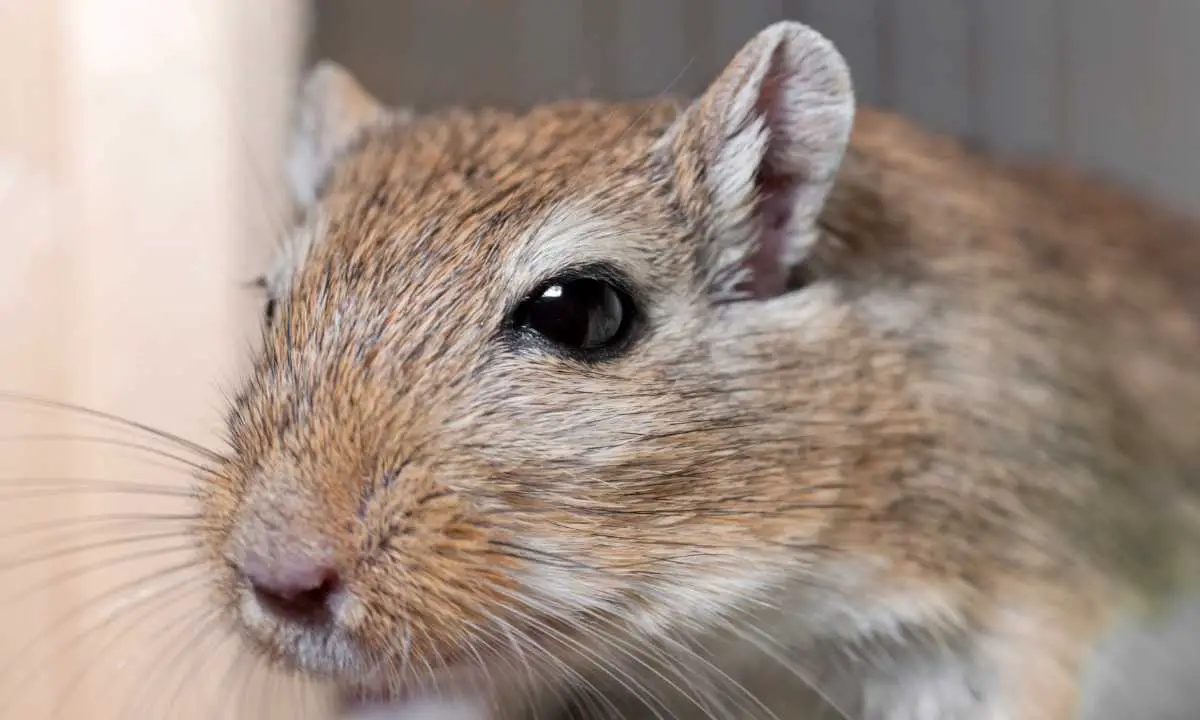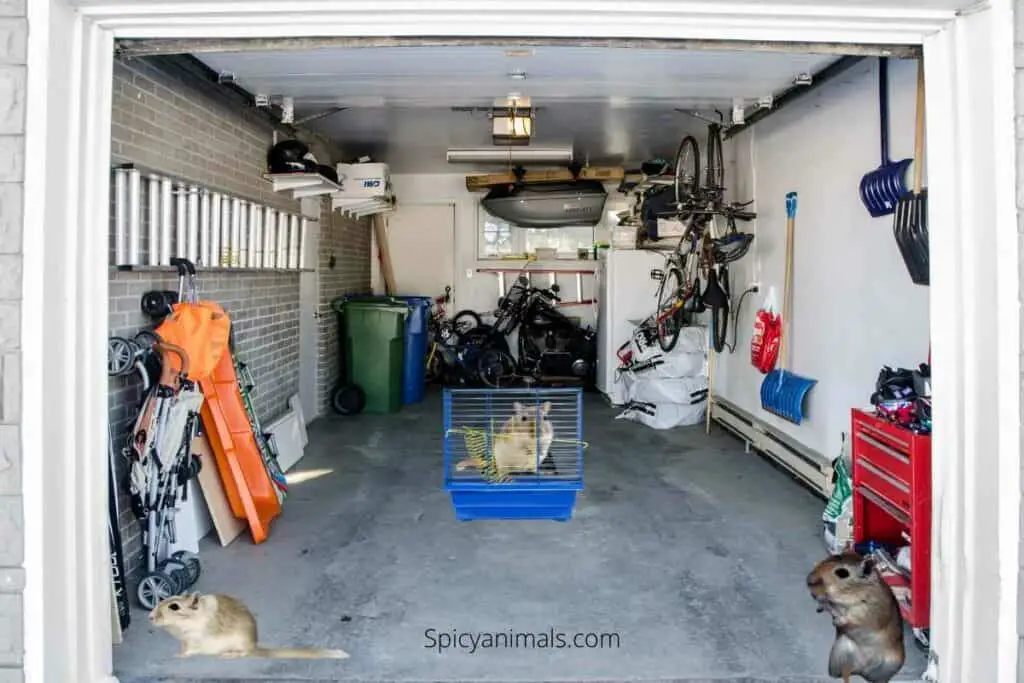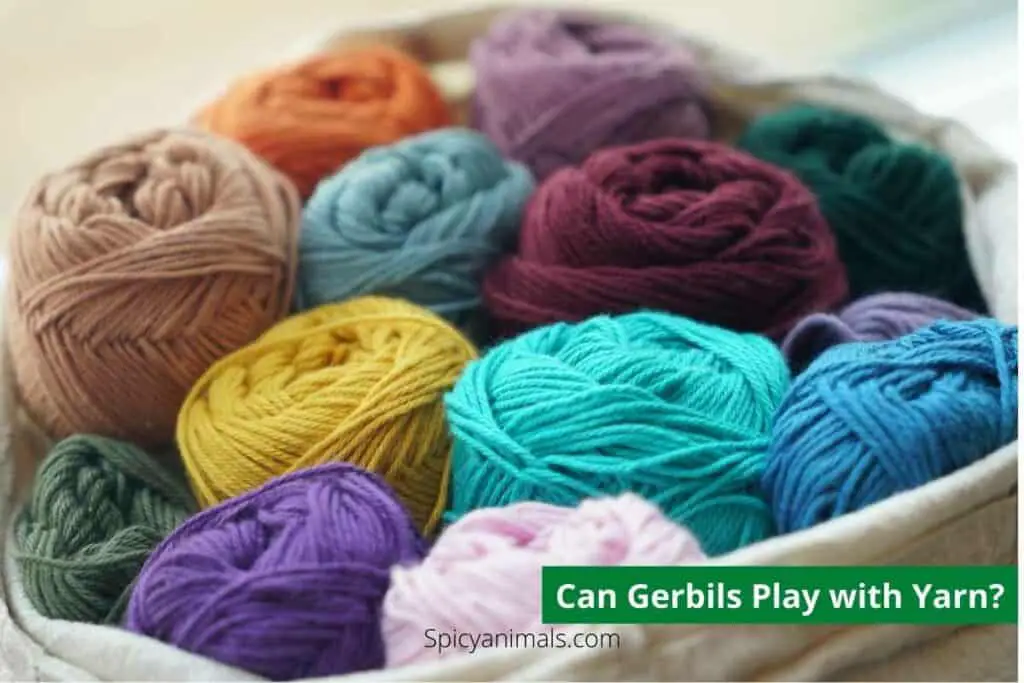If you are a pet lover, chances are you have considered getting a gerbil as an addition to your family. Gerbils make wonderful pets and can be great companions for all ages.
But before you get one, it’s important to consider where the best place is to put their cage in your home.
If you’re looking for the best location to place your gerbil’s cage, consider a warm and well-lit room that receives filtered sunlight. This will not only provide natural light and warmth, but it can also positively impact your gerbil’s physical and mental health.
It’s essential to provide adequate bedding and housing units within the gerbilarium as well, so your gerbil can seek shelter and feel secure whenever necessary.
By creating a comfortable and stimulating living environment for your gerbil, you can promote its overall well-being and happiness.
Table of Contents
Where to Put a Gerbil Cage
Finding the perfect place for your gerbil cage can be a challenge. But with a few tips, you can make sure your gerbil has the best home possible.
When choosing a location for your gerbil cage, it’s important to consider factors such as quiet and peacefulness, warmth and dryness, isolation from other animals, safety from toxins and chemicals, and that you won’t be disturbed.
First of all, it’s important to find a spot that is quiet and peaceful. Gerbils need a calm environment in order to feel safe and secure. Avoid putting the cage near loud noises or busy areas of the house.
Secondly, make sure the area is warm and dry. Gerbils are sensitive to temperature changes so it’s important to keep their cage away from drafts or direct sunlight.
Also, make sure there is no moisture in the air which could cause mold or mildew growth in their bedding material.
Thirdly, it’s important to keep your gerbil isolated from other animals in the house such as cats or dogs. This will help prevent any potential fights between them which could lead to injury or death for your gerbil.

Gerbil Housing Requirements
When it comes to choosing the best type of gerbil cage for your pet, there are a few key features that you should look for. Firstly, the cage should provide adequate space for your gerbil to move around and explore.
A good rule of thumb is to choose a cage that is at least 10 gallons per gerbil. This will give them enough room to run and play without feeling cramped.
Safety is also an important factor when selecting a gerbil cage. Make sure that the bars or wire mesh are close enough together so that your pet can’t escape or get stuck in between them.
Check for any sharp edges or points on the cage that could potentially injure your gerbil.
Your gerbil will also need some private space in their cage where they can retreat and relax away from other animals or people.
Look for cages with multiple levels, as this will give them more hiding spots and places to explore.
Ventilation is another important factor when selecting a gerbil cage. Look for cages with plenty of air holes so that your pet can breathe easily and stay comfortable in their home.
Finally, consider adding additional accessories such as tunnels, tubes, ladders, platforms, and chew toys to make their living environment even more interesting and stimulating!
Gerbil Temperature Requirements
Gerbils make great pets because they are able to thrive in average home temperatures. The optimal temperature range for gerbils is between 65 and 75 degrees Fahrenheit.
This temperature range provides them with the right amount of warmth and comfort, while also preventing any potential health risks that come with extreme temperatures.
It’s important to keep an eye on the temperature of your gerbil’s environment, as rapid changes in temperature can cause respiratory problems. If it ever gets too hot or cold, you’ll need to take steps to adjust the temperature accordingly.
Anything above 25 degrees Celsius or below -30 to -40 degrees Fahrenheit can be dangerous for your gerbil.
To ensure your gerbil remains healthy and happy, make sure its habitat is kept at a steady temperature between 68 and 75 degrees Fahrenheit. It’s important to protect your gerbil from loud noises and ultrasound as these can be stressful for them.
Overall, by providing your gerbil with a comfortable environment within the optimal temperature range, you can ensure it stays healthy and content!
Light and Darkness for Gerbils
Gerbils are small rodents native to the deserts of Africa and Asia. They have adapted to living in extreme temperatures, but they still need a certain level of care when it comes to lighting. Do gerbils need light? Yes, they do!
Gerbils should be kept in conditions that mirror their natural environment as closely as possible. This means providing them with a 12-hour light-dark cycle, preferably with natural sunlight during the day and darkness at night.
Low-light areas are also important for gerbils, as they will often hide away from bright lights or direct sunlight.
When it comes to providing lighting for your gerbil cage, you can use either fluorescent or incandescent bulbs. Fluorescent bulbs provide more natural light than incandescent bulbs and are better suited for gerbil cages.
LED lights should be avoided as they can cause discomfort due to their flickering effect.
It is also important to remember that gerbils have excellent eyesight and a greater range of perception than humans do, so it is best to keep the lighting levels low in order to avoid causing any distress or discomfort. You can also provide your gerbil with a night light if you wish – this will help them feel safe and secure while sleeping at night.
Covering a Gerbil Cage at Night
Covering your gerbil cage at night can be beneficial for both you and your pet. It can help muffle the noise coming from within the cage, as well as provide a sense of security for your gerbil. There are some things to consider before covering your gerbil cage at night.
Pros
One of the main benefits of covering a gerbil cage is that it can help muffle the noise coming from within the cage. This can be especially helpful if you have multiple pets or live in an apartment complex.
Covering their cage may also provide a sense of security for your gerbil, making them feel safe and secure while they sleep.
Cons
While covering your gerbilarium could help muffle the noise coming from within the cage, it’s unlikely to help your gerbil sleep. Gerbils are nocturnal animals and will likely still be active during nighttime hours regardless of whether or not their cage is covered.
If you choose to cover their cage, make sure that it is well-ventilated so that your pet has enough air circulation while they sleep.
Tips for Deciding Whether or Not To Cover Your Gerbil Cage At Night
When deciding whether or not to cover your gerbil’s cage at night, consider factors such as where you live and how many other pets you have in the home. If you live in an apartment complex or have multiple pets in the home, then covering their cage may be beneficial for both you and your pet.
However, if you live alone and don’t have any other pets in the home, then it may not be necessary to cover their cage at night since there won’t be any additional noise to muffle.
Make sure that whatever material you use to cover their cage is breathable so that they get enough air circulation while they sleep.
How to Set Up a Gerbil Cage
Gerbils make great pets, but in order for them to thrive, they need an environment that’s comfortable and safe. Here are some tips for setting up the perfect gerbil cage.
Picking a Cage
When selecting a cage for your gerbil, it’s important to choose one that is large enough to accommodate its needs. The ideal size is 10 gallons per gerbil, with room for at least 6 inches of bedding.
The cage should have security bars or mesh walls so your pet can’t escape.
Positioning the Cage
Once you’ve chosen a suitable cage, it’s time to position it in your home. Make sure the cage is placed in an area that is free from drafts and direct sunlight, as these can be harmful to your pet’s health.
Try to place the cage away from any loud noises or other distractions that could cause stress for your gerbil.
Organizing the Cage
Now that you’ve picked out and positioned your gerbil’s new home, it’s time to organize it! Start by adding bedding material such as wood chips or hay into the bottom of the cage – this will provide structure for their burrows and nests while also helping keep them warm and cozy.
Next, add toys and accessories such as tunnels and ladders – these will help keep your pet entertained and provide them with plenty of exercise opportunities!
Finally, secure a 4-8 ounce water bottle to the side of the tank or cage so no water will drain out – make sure you change the water at least once a day so it stays fresh!
It’s important to create an environment that meets all of your gerbils needs in order for them to stay healthy and happy – following these steps will help ensure they have everything they need!
Conclusion
in conclusion, choosing a warm and well-lit room with filtered sunlight for your gerbil’s cage can provide natural light and warmth, positively impacting its physical and mental health.
It’s crucial to ensure ample bedding and housing units within the gerbilarium for your gerbil’s comfort and security.
By creating a comfortable and stimulating living environment, you can promote your gerbil’s overall well-being and happiness.



